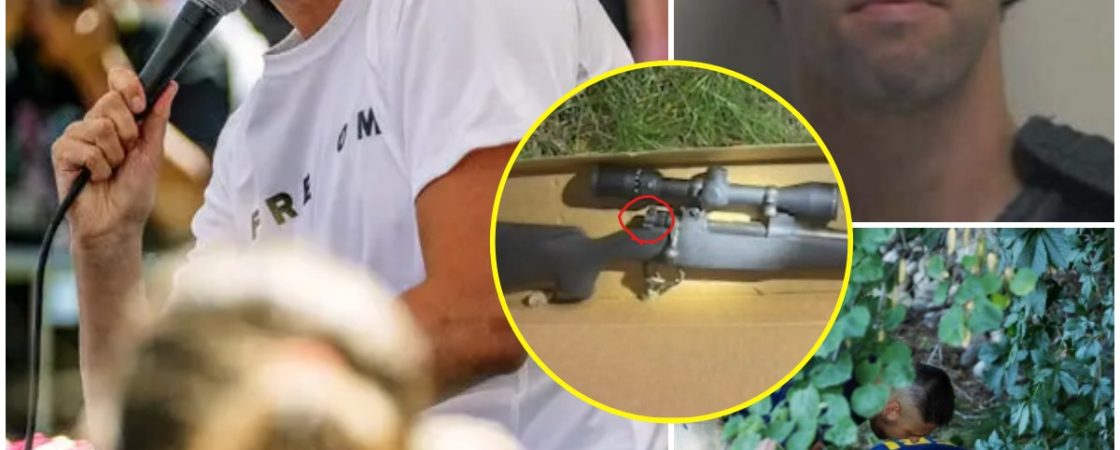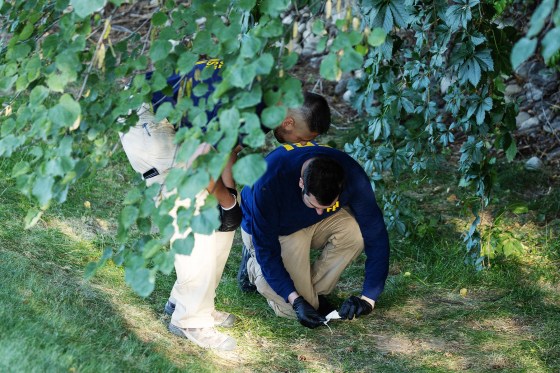Provo, Utah — In the crisp autumn air of September 10, 2025, Charlie Kirk’s “prove me wrong” event at Utah Valley University was meant to be another fiery exchange of ideas. Instead, it became the site of a national tragedy—and now, a forensic mystery that has shaken faith in America’s justice system.
For weeks, the country has watched as federal authorities zeroed in on Tyler James Robinson, a 22-year-old student, as the lone suspect in Kirk’s murder. Yet, in a stunning development, a single bullet found at the crime scene has thrown the prosecution’s case into chaos. The discovery has ignited a firestorm of speculation, heartbreak, and calls for answers.
The Bullet That Changed Everything
The moment the sh0t rang out, panic swept through the Hall of Flags plaza. Kirk, mid-sentence, collapsed, blood pooling at his neck. The crowd of 3,000 students and supporters screamed and scattered. Within minutes, paramedics rushed Kirk to Temponogos Regional Hospital, but his life could not be saved.
Police quickly cordoned off the area and began their search. In a wooded patch nearby, they found a vintage Mauser Model 98 bolt-action rifle, wrapped in a towel. Inside: one spent cartridge, three live rounds, each etched with bizarre phrases—“notices bulge,” “Hey fascist, catch,” “Bella Chow,” and “If you read this you are gay. LMAO.”
DNA on the rifle and towel matched Robinson, but the story was far from simple. Surveillance footage was grainy, inconclusive. Eyewitnesses disagreed on the shooter’s appearance. And then came the autopsy.
Forensic examiners found a bullet lodged just beneath Kirk’s skin. It was fragmented but intact enough for ballistics testing. The results stunned investigators: the bullet did not match the .30-06 rounds fired by the Mauser rifle. Moreover, experts insisted a high-powered .30-06 fired from over 140 yards would have torn through soft tissue, leaving a massive exit wound. Kirk’s wound was small, with no exit—“medically impossible,” one examiner said, “if the Mauser was used.”
A Case Unravels
The official timeline placed Robinson on a rooftop at 12:15 p.m., firing at 12:23, and fleeing shortly after. Text messages allegedly sent by Robinson discussed his plan to retrieve the weapon and his anxiety about fingerprints. But forensic linguists cast doubt on the texts’ authenticity—phrasing was odd, timestamps missing, some words out of character.
“Something about those messages felt off,” said Candace Owens, speaking on her podcast. “It’s like they were written to fit the prosecution’s story, not reality.”
Adding to the confusion, a photo surfaced of Robinson at a Dairy Queen hours later, looking calm and collected. “He didn’t look like someone who just committed murder,” said his roommate, Sarah Lopez. “He was eating fries and joking about an upcoming exam.”
Meanwhile, campus cameras—so often touted as foolproof—failed to capture Robinson carrying the rifle to the roof or firing it. “It’s almost like someone wanted the evidence to be just blurry enough,” said one student, watching the investigation unfold.
Multiple DNA Profiles, Multiple Mysteries
Lab results on the rifle and towel revealed more than Robinson’s DNA. Several unidentified profiles appeared, raising the specter of accomplices—or a frame job.
“I don’t know whose DNA that is, but it’s not mine,” Robinson reportedly told his lawyer. “I never touched that gun before that day.”
Eyewitness accounts further muddied the waters. Some described the shooter in tactical gear, not the t-shirt and jeans Robinson wore. Others insisted the weapon was not a Mauser at all. “It looked like a modern hunting rifle,” said one student, trembling as she recalled the chaos.
Federal Pressure and the Shadow of a Cover-Up
As the investigation stalled, whispers of federal interference grew louder. FBI Director Kash Patel, according to sources, pressured Utah officials to close the case quickly. “They wanted Robinson named as the lone shooter,” said a local detective, speaking on condition of anonymity. “But the evidence just doesn’t add up.”
The parallels to other controversial ass@ssinations in American history were hard to ignore. Independent investigators and citizen journalists flocked to Provo, demanding transparency. Some floated the theory that Robinson was coerced into planting the rifle, while the real shooter operated from a nearby vacant house.
A bizarre twist came when a 71-year-old man confessed to the shooting, only to recant days later. “I did it,” he mumbled to police, “because I thought someone had to take the blame.” His DNA did not match any found at the scene.
A Mother’s Plea and a Nation’s Grief
Erika Kirk, Charlie’s widow, stood before a sea of candles at a Turning Point USA vigil. Her voice was steady but raw. “Charlie believed in truth, in debate, in justice. If we let his d3ath become a political cover-up, we betray everything he stood for.”
Her words echoed across social media, inspiring rallies and petitions. “We want answers,” read one sign. “Justice for Charlie. Justice for Tyler.”
Where Do We Go From Here?
As the investigation grinds on, the single bullet remains at its center—a silent witness to a crime that may be far more complex than anyone imagined. The case against Robinson is now balanced on a knife’s edge, with prosecutors scrambling to explain the ballistic mismatch and the web of contradictory evidence.
Legal experts warn that without a clear match between weapon and wound, any conviction will be haunted by doubt. “If the bullet doesn’t fit, you must acquit,” said former federal prosecutor Daniel Ortiz. “It’s that simple.”
For now, the country waits. The Hall of Flags plaza is quiet. The questions grow louder. And somewhere, the truth hides in the shadows—waiting for someone brave enough to bring it into the light.





